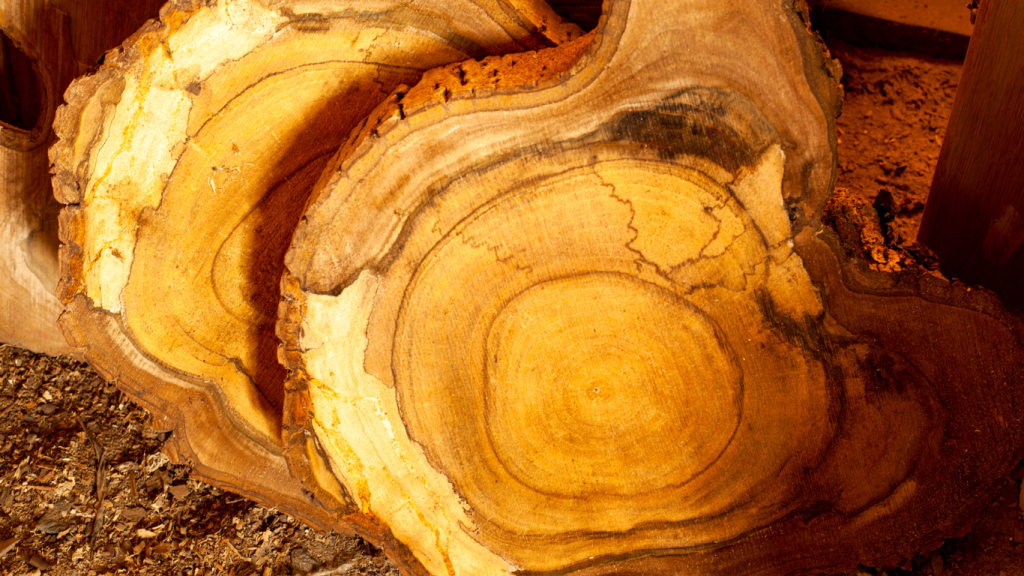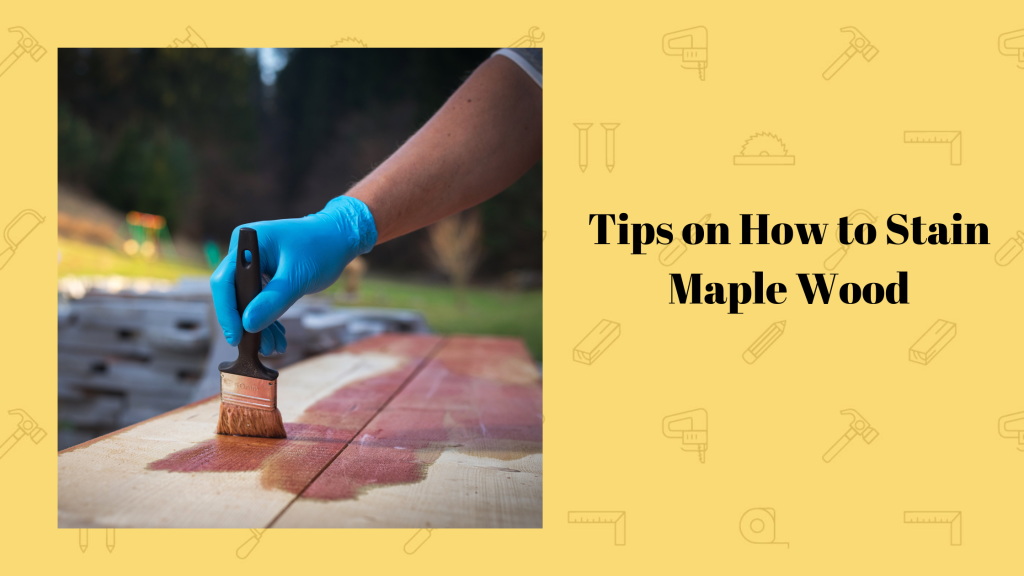Walnut wood color is anything between blonde, grey, and brown. But if you’re anything like I used to be, you assumed walnut was a very dark timber.
I’m a woodwork enthusiast with 20 years in the workshop, and I know walnut wood like the back of my palm. I’ve mastered the art of cutting and shaping walnut wood for furniture and staining maple wood to use as a walnut substitute.
But most importantly. I know the 7 attributes of walnut wood you should know to distinguish it.
Let’s get started
Seven Key Characteristics of Walnut Wood
- Walnut grain is dense, straight, and tight.
- Walnut is shock-resistant, and it has a Janka rating of 1010
- Black walnut wood has antibacterial and antifungal properties
- Walnut wood is hypoallergenic
- Walnut wood contains juglones, which repel insect attack
- Sun exposure causes the walnut wood color to fade fast, so carpenters prefer other species like cedar for exterior use
- Walnut wood color consists of a white-blond sapwood and deep brown heartwood

Why Does Walnut Wood Color Change Over Time?
Sun exposure is the main reason why walnut furniture changes color over time. In this case, your once dark walnut shelves or deck can become pale with time.
Secondly, wood manufacturers are known for using steam to treat walnut wood.
You see, walnut’s heartwood is a rich and dark brown, while its sapwood is blonde. So, the steam darkens the sapwood and brings it closer to the heartwood’s color.
If your walnut wood was pretreated with steam, it’ll likely change color over time. However, you can restore the walnut wood color with a fresh coat of stain.
What Are the Common Uses of Walnut Wood?

Furniture
Walnut wood is naturally dense and durable, so furniture manufacturers use it to make shelves, drawers, and interior flooring. Walnut furniture resists warping in heat and humidity, making it a popular choice for kitchen cabinetry.
Interior Trim
Interior trim refers to the materials for covering gaps between transitions in building materials.
Decorators use walnut wood to frame doors, windows, ceilings, and floors. The stained dark walnut creates a beautiful contrast against these surfaces to protect the gaps or simply decorate the room.
Flooring
Walnut flooring is warm and rich, which makes it versatile for different interior styles. And, it works well for rustic, contemporary, and modern interiors.
Walnut floors are also insect-repellant, which makes them easy to handle. With proper maintenance, they can last several years.
Gunstocks
Gunstocks require a dense and shock-resistant material, and walnut is in popular demand.
Walnut grain is close and denser, which makes it almost immune to splitting. Plus, it is easy to cut and stain for a regal finish.
Walnut Wood vs. Black Walnut
What we call “walnut wood” is English walnut, which is a lighter, golden brown variety.
The main difference between walnut wood and black walnut is their origin. North America is the only source of black walnut worldwide, while other regions have different walnut species.
English walnut is also softer and malleable, and it grows slowly. But Black walnut trees are fast-growing and more resistant.

What to Look for When Purchasing Black Walnut Wood
- Confirm that you’re buying original black walnut or English walnut wood
- Check for knots and verify the form of maintenance you should do on the wood
- Always ensure that you have a manufacturer’s guarantee before purchase
- Inspect the grain density and patterns
Is Walnut a Hardwood or Softwood?
Walnut is a hardwood because it is a broad-leafed tree, not a conifer.
Hardwood trees grow much slower than softwood (or conifers) and they have a denser structure. This density makes hardwood timber durable and more resistant to damage.
It is important to remember that hardwood is necessarily harder than softwood. But it is certainly denser.
How to Care for Walnut Wood Furniture
Here are some ways to maintain your walnut wood furniture to make it last a lifetime
- Keep your walnut wood furniture away from direct sunlight
- Wipe spills immediately to avoid moisture damage
- Use tablecloths and rugs to protect your wood from dents
- Don’t place hot utensils to avoid damaging the furniture’s finish
Let’s Put a Bow on It
Black and English walnut wood are farmed for timber, but they’re still very different. The former only originates from North America and the latter is found around the world. However, you can easily tell them apart by their colors, density, and workability.
Since you’re thinking of using walnut wood, you should know how much a cord of wood weighs. I’ve covered it extensively in an article to help you avoid scratching your head at the wood dealer.
Which walnut wood color is your go-to for woodwork projects? Tell us why in the comments and share this piece with someone about to buy walnut wood!
Frequently Asked Questions
What Color is Walnut Wood?
Walnut wood color is a dark brown lighter than mahogany but darker than oak. The sapwood can range from white to yellow-blonde, while the heartwood is a deep, chocolate color.
Is Walnut Considered a Light or Dark Wood?
Walnut is considered a dark wood because most people are familiar with it in its darkest shade. But in reality, wood manufacturers dye and steam the sapwood to blend in with its dark heartwood. So, the color of your walnut wood will depend on the layer of wood you have.
What Does Natural Walnut Look Like?
Natural walnut is a coarse, dense, and straight-grained timber. But, its grain might also have interlocking patterns of light and dark growth rings. You should also know that not every deep brown log is walnut wood. Some walnut-colored wood is simply maple or pecan wood with a fresh coat of walnut stain.
What Color is Close to Walnut?
Reddish-brown is close to walnut’s deep brown, which is why woodworkers use mahogany as a walnut wood substitute. To achieve the walnut wood color, you can simply sand and stain your mahogany with a high-quality walnut stain.
*This post may contain affiliate links. Please see my disclosure to learn more.



